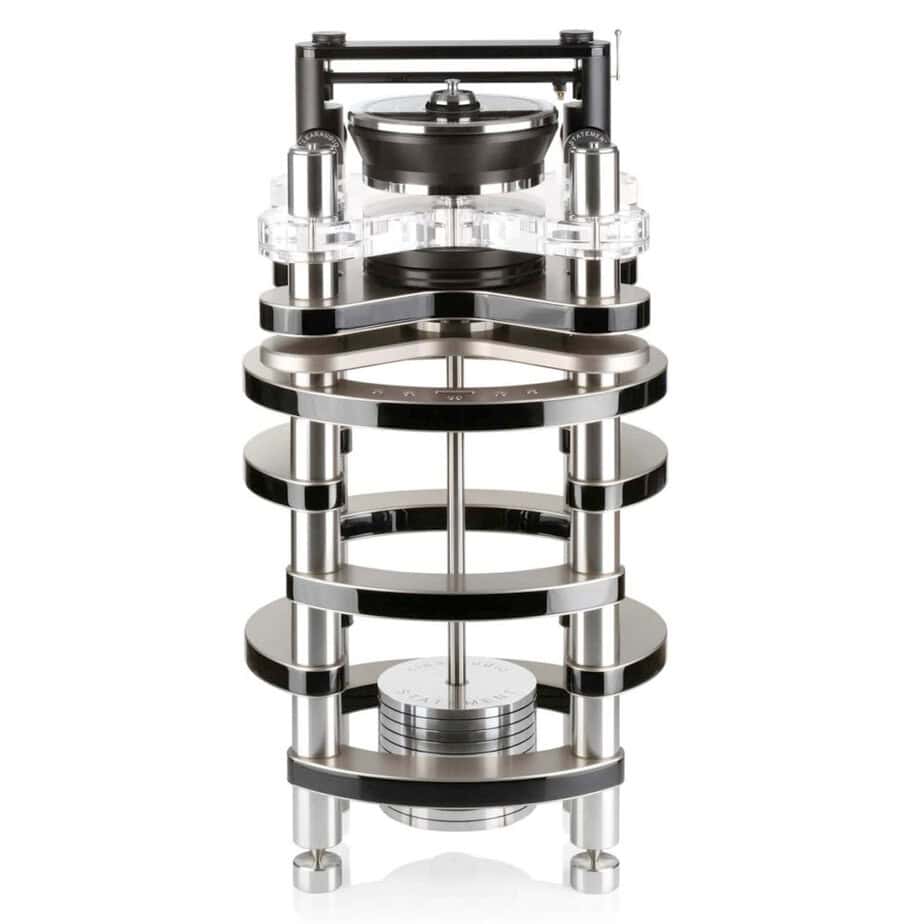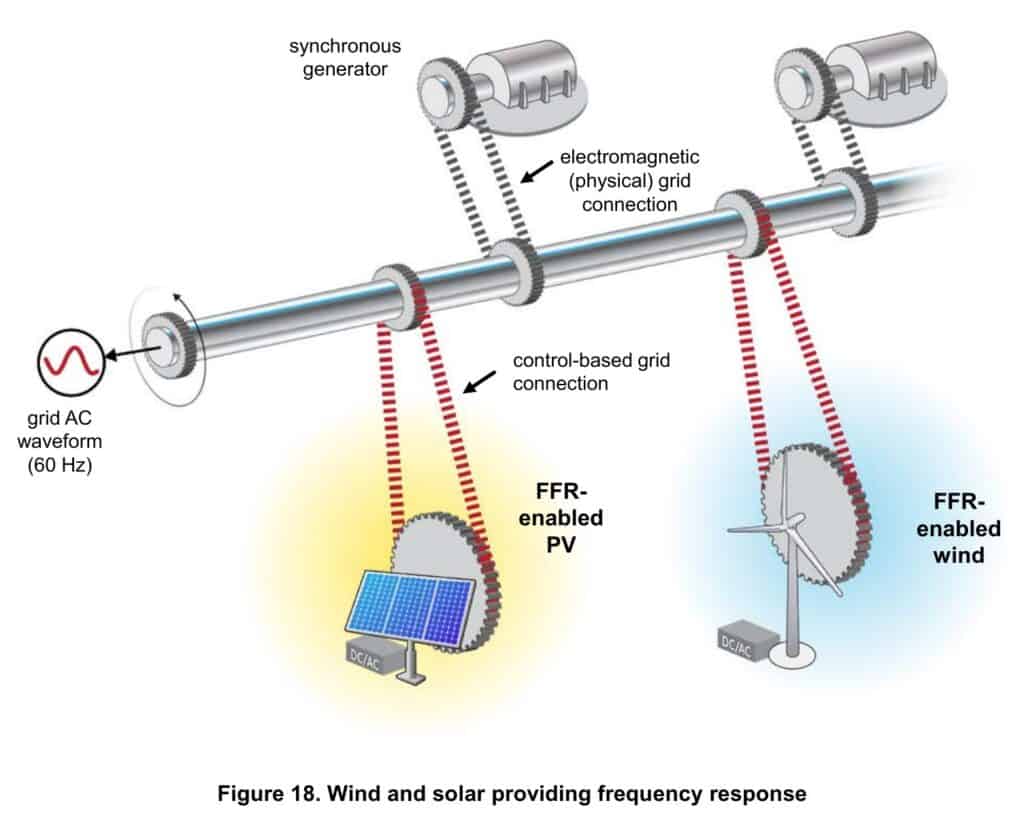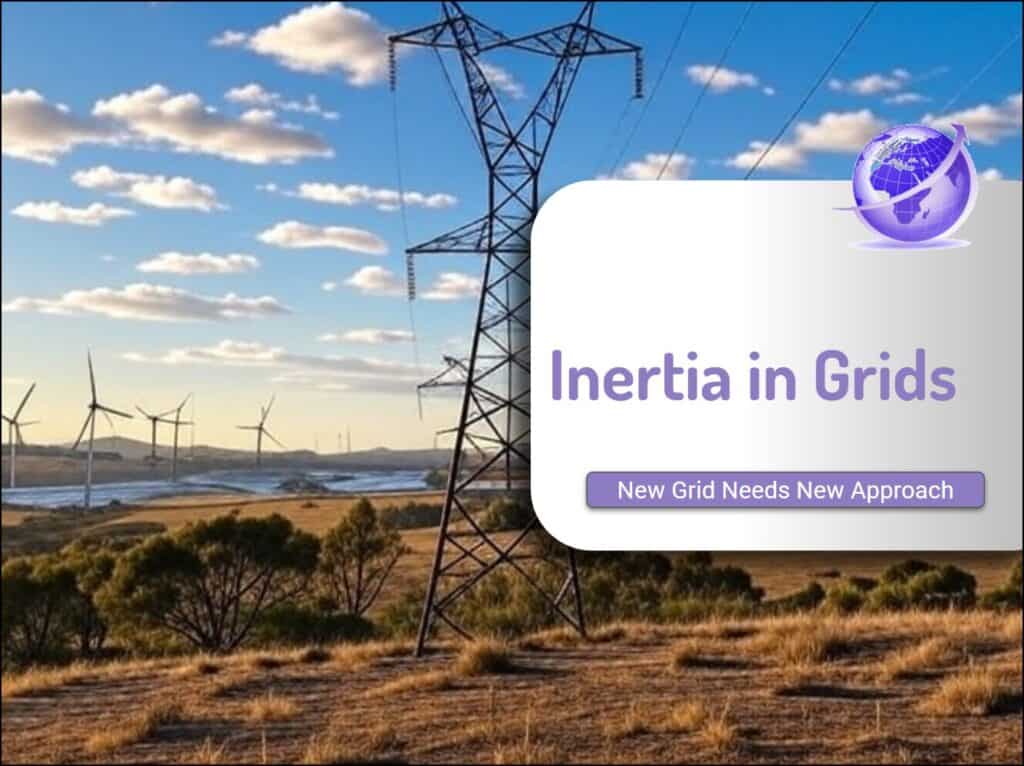Inertia in electricity grids is a term used in electricity grids describing the behaviour of voltage. Many think solar and wind won’t be able to keep the grid stable because they lack “inertia”. Solar, wind and batteries will probably do a BETTER job and you can explain it in various ways. The world is moving to renewable grids.
- System strength is an electricity grid’s ability to maintain a steady voltage waveform.
- System inertia is its ability to maintain a steady frequency.
- Electricity grid security and reliability needs both system strength and system inertia under all network conditions, no matter the source of generated power.
In the Australian grid or the NEM
- Voltage has to be kept at 230 V (Australia) with a range of 253 V to 216 V
- Frequency has to be kept at 50 Hertz – cycles per second. The accepted range is 49.85Hz and 50.15Hz
Outside of those ranges, the grid can have a blackout or brownout and there are severe penalties for failure to operate in that range. Imagine that during the State of Origin football match with 10 million households watching. At half time, everyone gets up and boils the kettle for a cup of tea. That surge in electricity demand, at 1kW per kettle is 1GW of electricity demand, for 2 minutes. Gas turbines, coal plants or hydroelectric power stations cannot power on that extra supply in 2 minutes.
Somehow the voltage and frequency needs to be be maintained. These services are call FCAS – frequency control and auxiliary services. Inertia is one of those services.
In some respects, the old grid is a record player – the new grid is a digital player



If you play vinyl records, the rotating mass of the turntable is used to keep the speed steady. This leads some vinyl enthusiasts to seek more mass because that will keep things more steady.
This turntable by Excel audio attaches a separate mass.
In the same way the inertia in the rotors of current power plants helps the grid to keep a steady 50 Hz (in e.g. Europe) or 60 Hz (in e.g. the US) frequency.
In the modern grid, spinning turbines from gas or hydroelectric power keep spinning and can provide electricity to meet that rapid increase in demand. If there is a shortage of supply, the voltage will drop, but not enough for most people to realise their kettle takes 3 minutes to boil, not 2 minutes. This increase in supply is mostly delivered by Synchronous generators.
Synchronous Generator
These machines turn a heavy copper coil wound around a heavy iron core and this helps keep the grid frequency steady as in the third image
Inertia in Electricity Grids in the Future
If you really go all the way in your mind, you can see a slow transformation from AC to DC grids. AC won the war of the currents a century ago because only AC could be stepped up or down to a higher or lower frequency. But with transistors and computers that’s no longer true.
These days it’s easier to work with DC. Which is also safer, quieter, cheaper, more efficient and what solar panels, batteries, computers, phones and other appliances use natively.
We will move there, one micro grid at the time.
Australia is trialling using batteries to provide inertia through smart electronics. The Hornsdale Power Reserve in South Australia, a large-scale battery storage facility, is a world-first example of a battery providing inertia services at scale, utilizing Tesla’s Virtual Machine Mode.
The importance of inertia is coming to an end as the grid is going from “from vinyl to digital”. Digital uses less resources, is cheaper, gives better quality electricity and is more resilient. Especially now that batteries are going to become ubiquitous.
At the same time your home, neighborhood, city, and country will acquire energy autonomy using batteries that can provide that instantaneous electricity with the grid as the backup system. For most of us it still delivers most of our energy, but we stabilize it locally, solving most grid congestion and becoming immune to blackouts.
References
- From Analog to Digital https://x.com/AukeHoekstra/status/1924060413831893488
- What is electricity grid inertia?2022 https://arena.gov.au/blog/what-is-electricity-grid-inertia/
- Large-Scale Battery Storage as an Inertia Substitute 2024 https://arena.gov.au/knowledge-bank/flagship-report-large-scale-battery-storage-as-an-inertia-substitute/









